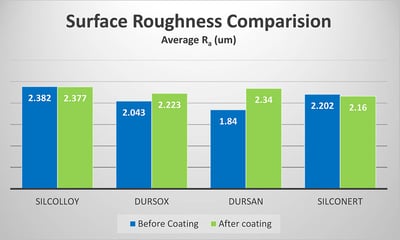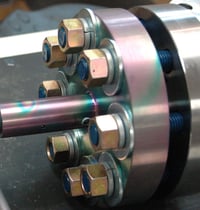
Will SilcoTek® coatings make my part surface smoother or rougher? The short answer is no. The why and how takes a bit of explaining.
Why is surface roughness important?
Surface roughness (Ra) is an important factor in the design of instrumentation, sealing surfaces, sample flowpaths and precision machine components. A significant change to roughness can result in component interface problems, seal area leaks, or fluid flow issues. Because surface finish can impact performance, it can be a major factor in the choice of coating used for improved corrosion resistance, durability, or inertness.
How does SilcoTek compare?

A recent SilcoTek study shows that our inert corrosion resistant coatings have minimal to no impact on surface finish. The graph below compares coated and uncoated optical profilometry data. Results show the Silcolloy, Dursox, Dursan, and SilcoNert coated test coupons have little to no impact on surface morphology.

The Verdict
SilcoTek CVD coatings are thin and conformal, so in most cases customers do not have to account for changes in surface roughness in critical flowpaths.
This gives engineers and designers the ability to substantially improve the surface properties of parts while maximizing flexibility and ease of integration without impacting design.
SilcoTek coatings can be applied to most stainless steel, alloy, glass, and ceramic components like:
- Valves
- Flow meters
- Mass flow controllers
- Liners
- Compression and face seal fittings
- Electropolished components
- Instrument probes
- Sampling system components
|
 |






